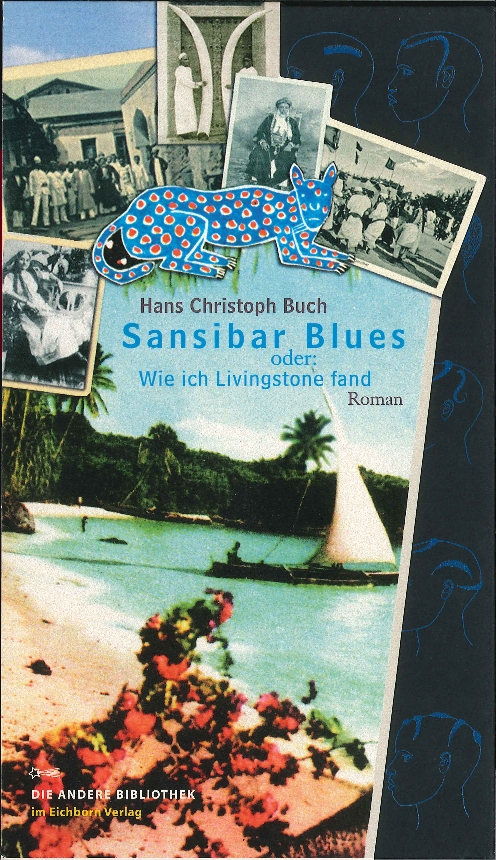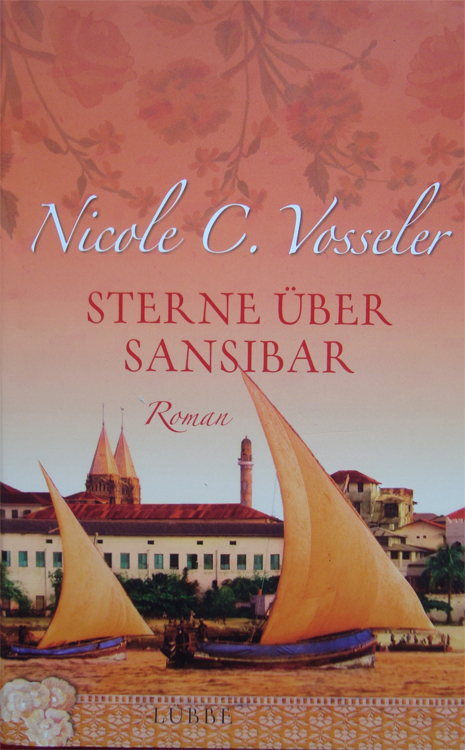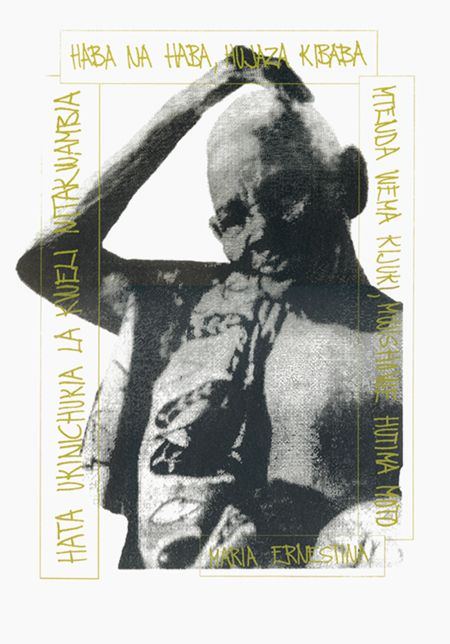“When I went shopping at the market with my maid Aisha the passers-by gave us a wide berth for fear of losing their innocence or their wallets in the encounter with a woman of the harem [...] Dockworkers, sailors and beer-wagon drivers stopped dead in their tracks and stared at me wide-eyed, and it was clear from their expressions which pornographic film was playing out behind their low brows - an anachronism, I know, because back then there were no porn films or sex shops. I was all the more amazed when I read the following lines in Daheim magazine - or it might have been Gartenlaube or Über Land und Meer [...]” (Sansibar Blues, pp. 154-155).
In this novel by the writer, essayist and journalist Hans Christoph Buch - portraying “a German century in Zanzibar” and declaring “every” biography to be like the “lives of the saints”, in “never giving the whole truth and relying on the omission of important facts” (Sansibar Blues, p. 176) - the Emily Ruete character forms one of several significant points of connection between Zanzibar and Germany. The novel’s subtitle is first and foremost a play on Henry Morton Stanley's 1872 book, but it also works to call into question “established” colonial figures and accounts, drawing instead on an account of Tippu Tip’s life as related by Heinrich Brode - who had previously translated Tippu Tip’s autobiography into German - and published in English (trans. H. Havelock in 1907 as Tippoo Tib: The Story of His Career in Central Africa). The Zanzibari slave and ivory trader Tippu Tip, at that time one of the most important figures on the East African coast, was present at the meeting of Stanley and Livingstone: in Buch’s novel he finds Livingstone and pronounces the famous words of the meeting. The passage following the extract given above also epitomises this calling into question: its playful mix of the elements of narrations of Emily Ruete’s life that preceded the memoirs shows that they are identical and interchangeable, and in so doing, divests them of their authority.
Call number: Berlin State Library, 1a732434
“Salima cowered in a corner and let the tears stream down her face. [...] Soldiers kept watch by her door day and night. They wouldn’t let her out, nor would they let Heinrich in. Despair had settled over the house like a bird with dark wings [...]. ’I’m sitting here, trapped! Without Heinrich. Without a hope of ever getting out of here. Sooner or later Majid’s patience will run out [...]’” (Sterne über Sansibar, pp. 235-236).
Emily Ruete is the protagonist of this historical romance, a novelistic reworking of the memoirs and her later writings which seems to adhere relatively closely to both - with the significant exception of Heinrich and Emily Ruete’s “love story”: Vosseler’s version of the “elopement” is apparently inspired to a much greater extent by the illustrated magazines (and the diplomatic communications of the time) than by the memoirs - perhaps because the latter’s straightforward narration of the episode would be out of place in a “magical love story that combines the tropical heat of the Isle of Spices with the cool breeze of the far north” (Sterne über Sansibar, dust jacket).
Call number: Berlin State Library, 1a812975
From the performance’s “Denk- Zettel” [“reMINDer” text]: “The remarkable life of Princess Salme is divided into two halves and has many sides. [...] I welcome the exhibition dedicated to the memory of Sayyida Salme, daughter of an [enslaved woman], who became the victim of Bismarck’s gunboat politics and had to experience daily racism in Hamburg and Germany which she wrote about in her book ‘Letters Home’.
At the same time, I reject any possible tribute to a princess who took the services of the enslaved for granted and profited from them. [The enslaved] were made to toil on Princess Salme’s clove plantations. Even when she was living in Germany, where abolition had long been the topic of social debates, Salme continued to advocate slavery as a ‘necessary’ institution […]” (“Denk-Zettel”, http://www.afrika-hamburg.de/mariaernestina.html )
The artist HMJokinen gave this performance at the opening of the exhibition “Hinter dem Schleier der Geschichte – eine arabische Prinzessin in Sansibar, Oman, Deutschland und Tscherkessien” [“Behind the Veil of History – an Arabian Princess in Zanzibar, Oman, Germany and Circassia”] in Hamburg City Hall during the “Zanzibar Week” (2009). Sayyida Salme/Emily Ruete was fêted in this exhibition as a symbol of Hamburg’s future twinning with Dar es Salaam. With the opposing figure of Maria Ernestina, a formerly enslaved woman living in Bagamoyo, the performance also reminds us of the role of Sayyida Salme as slaveholder and of that of Emily Ruete as a defender of slavery, an aspect of the memoirs that was not discussed in the exhibition at Hamburg City Hall, and that creative and historical reworkings have only begun to focus on very recently. Within the framework of the performance, Maria Ernestina’s biography was conceptualised as a symbol of lives forgotten by the chroniclers of history – she left behind only a very few biographical traces and a photo portrait from which the screen print was created. The image is framed with gold-coloured texts in Kiswahili – proverbs that Tanzanian women wear on their kanga. Following the spiritual tradition of iconography, both Eastern and Western, the colour gold symbolises eternity and thus exalts Maria Ernestina’s image. Thirty-five screen print portraits (corresponding to the number of years since Maria Ernestina’s death in 1974) were laid out by the artist for the audience to take with them.
Further information: http://www.afrika-hamburg.de/mariaernestina.html (in German)
Private collection
Photo © HMJokinen



